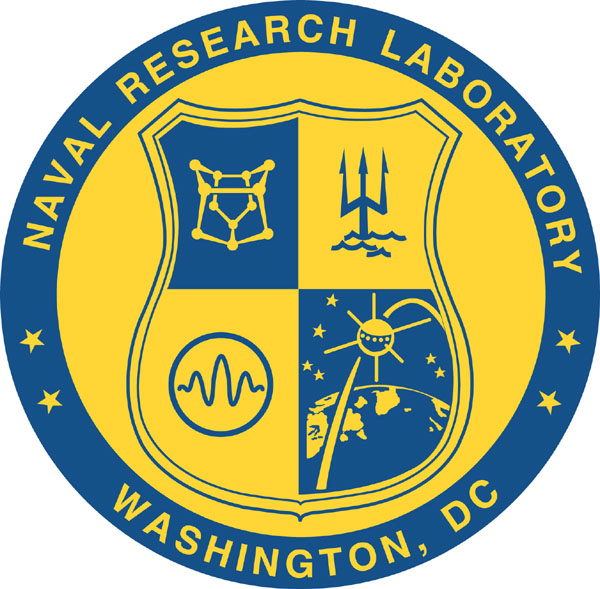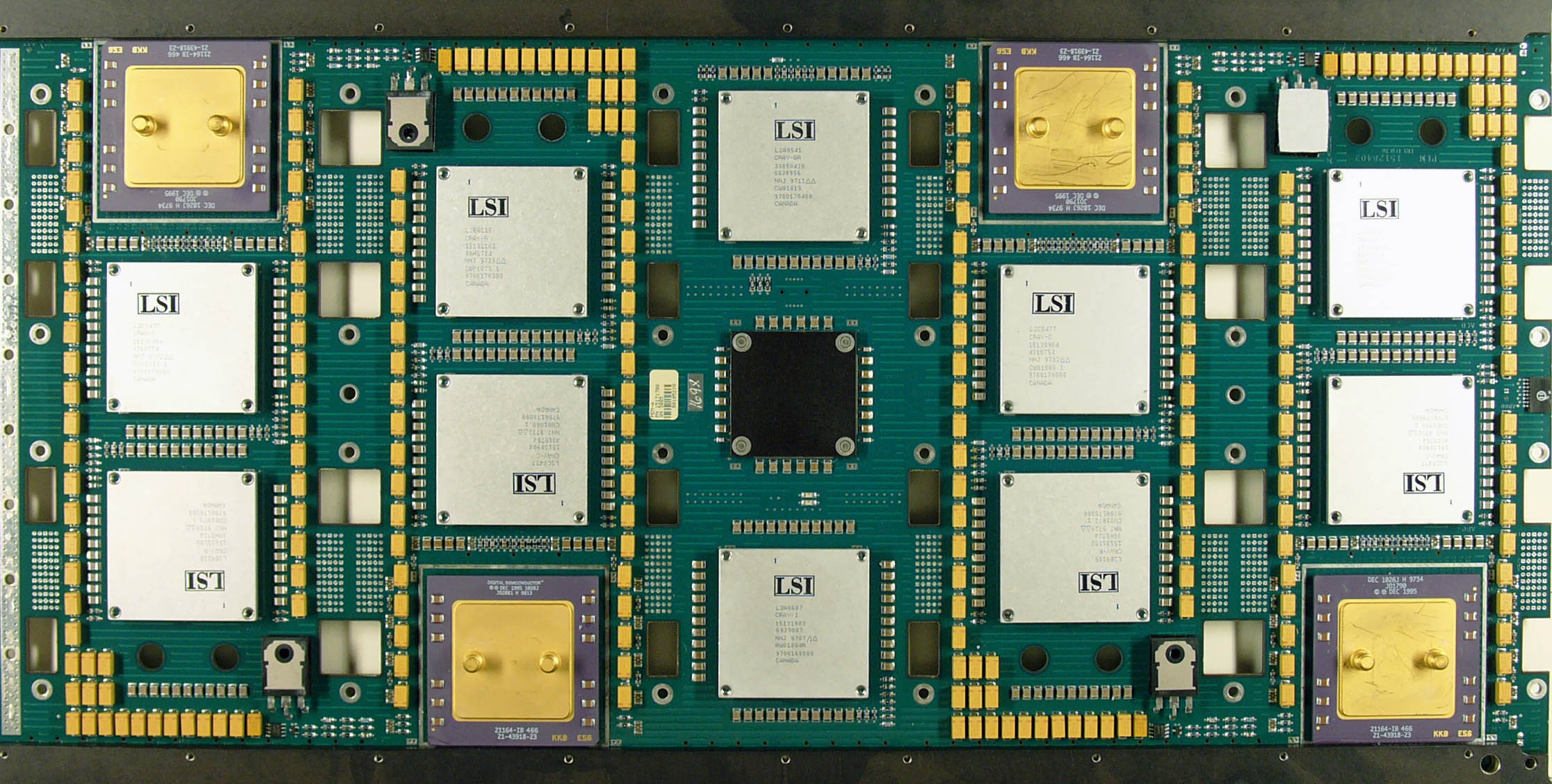|
Cray MTA-2
The Cray MTA-2 is a shared-memory MIMD computer marketed by Cray Inc. It is an unusual design based on the Tera computer designed by Tera Computer Company. The original Tera computer (also known as the ''MTA'') turned out to be nearly unmanufacturable due to its aggressive packaging and circuit technology. The MTA-2 was an attempt to correct these problems while maintaining essentially the same processor architecture respun in one silicon ASIC, down from some 26 gallium arsenide ASICs in the original MTA; and while regressing the network design from a 4-D torus topology to a less efficient but more scalable Cayley graph topology. The name ''Cray'' was added to the second version after Tera Computer Company bought the remains of the Cray Research division of Silicon Graphics in 2000 and renamed itself Cray Inc. The MTA-2 was not a commercial success, with only one moderately-sized 40-processor system ("Boomer") being sold to the United States Naval Research Laboratory in 2002, a ... [...More Info...] [...Related Items...] OR: [Wikipedia] [Google] [Baidu] |
Multiple Instruction, Multiple Data
In computing, multiple instruction, multiple data (MIMD) is a technique employed to achieve parallelism. Machines using MIMD have a number of processor cores that function asynchronously and independently. At any time, different processors may be executing different instructions on different pieces of data. MIMD architectures may be used in a number of application areas such as computer-aided design/computer-aided manufacturing, simulation, modeling, and as communication switches. MIMD machines can be of either shared memory or distributed memory categories. These classifications are based on how MIMD processors access memory. Shared memory machines may be of the bus-based, extended, or hierarchical type. Distributed memory machines may have hypercube or mesh interconnection schemes. Examples An example of MIMD system is Intel Xeon Phi, descended from Larrabee microarchitecture. These processors have multiple processing cores (up to 61 as of 2015) that can execute differen ... [...More Info...] [...Related Items...] OR: [Wikipedia] [Google] [Baidu] |
Cray Inc
Cray Inc., a subsidiary of Hewlett Packard Enterprise, is an American supercomputer manufacturer headquartered in Seattle, Washington. It also manufactures systems for data storage and analytics. Several Cray supercomputer systems are listed in the TOP500, which ranks the most powerful supercomputers in the world. In 1972, the company was founded by computer designer Seymour Cray as Cray Research, Inc., and it continues to manufacture parts in Chippewa Falls, Wisconsin, where Cray was born and raised. After being acquired by Silicon Graphics in 1996, the modern company was formed after being purchased in 2000 by Tera Computer Company, which adopted the name Cray Inc. In 2019, the company was acquired by Hewlett Packard Enterprise for $1.3 billion. History Background: 1950–1972 In 1950, Seymour Cray began working in the computing field when he joined Engineering Research Associates (ERA) in Saint Paul, Minnesota. There, he helped to create the ERA 1103. ERA eventually became ... [...More Info...] [...Related Items...] OR: [Wikipedia] [Google] [Baidu] |
Tera Computer Company
The Tera Computer Company was a manufacturer of high-performance computing software and hardware, founded in 1987 in Washington, D.C., and moved 1988 to Seattle, Washington, by James Rottsolk and Burton Smith. The company's first supercomputer product, named MTA, featured interleaved multi-threading, i.e. a barrel processor. It also had no data cache, relying instead on switching between threads for latency tolerance, and used a deeply pipelined memory system to handle many simultaneous requests, with address randomization to avoid memory hot spots. The company was listed on NASDAQ under the ticker symbol "TERA". In 1997, Tera Computer went to San Jose, California-based Cadence Design Systems Inc to develop microprocessors for their use in CMOS technology. Unisys manufactured Tera's gallium arsenide CPU. Upon acquiring the Cray Research division of Silicon Graphics in 2000, the company was renamed to Cray Inc.https://www.eetimes.com/tera-computer-buys-cray-from-sgi-readies-cm ... [...More Info...] [...Related Items...] OR: [Wikipedia] [Google] [Baidu] |
Application-specific Integrated Circuit
An application-specific integrated circuit (ASIC ) is an integrated circuit (IC) chip customized for a particular use, rather than intended for general-purpose use, such as a chip designed to run in a digital voice recorder or a high-efficiency video codec. #Application-specific standard product, Application-specific standard product chips are intermediate between ASICs and industry standard integrated circuits like the 7400 series or the 4000 series. ASIC chips are typically semiconductor device fabrication, fabricated using metal–oxide–semiconductor (MOS) technology, as MOS integrated circuit chips. As feature sizes have shrunk and Electronic design automation, chip design tools improved over the years, the maximum complexity (and hence functionality) possible in an ASIC has grown from 5,000 logic gates to over 100 million. Modern ASICs often include entire Central processing unit, microprocessors, memory blocks including Read-only memory, ROM, Random-access memory, RAM, ... [...More Info...] [...Related Items...] OR: [Wikipedia] [Google] [Baidu] |
Cayley Graph
In mathematics, a Cayley graph, also known as a Cayley color graph, Cayley diagram, group diagram, or color group, is a Graph (discrete mathematics), graph that encodes the abstract structure of a group (mathematics), group. Its definition is suggested by Cayley's theorem (named after Arthur Cayley), and uses a specified generating set of a group, set of generators for the group. It is a central tool in combinatorial group theory, combinatorial and geometric group theory. The structure and symmetry of Cayley graphs make them particularly good candidates for constructing expander graphs. Definition Let G be a group (mathematics), group and S be a generating set of a group, generating set of G. The Cayley graph \Gamma = \Gamma(G,S) is an Edge coloring, edge-colored directed graph constructed as follows: In his Collected Mathematical Papers 10: 403–405. * Each element g of G is assigned a vertex: the vertex set of \Gamma is identified with G. * Each element s of S is assigned a ... [...More Info...] [...Related Items...] OR: [Wikipedia] [Google] [Baidu] |
Silicon Graphics
Silicon Graphics, Inc. (stylized as SiliconGraphics before 1999, later rebranded SGI, historically known as Silicon Graphics Computer Systems or SGCS) was an American high-performance computing manufacturer, producing computer hardware and software. Founded in Mountain View, California, in November 1981 by James H. Clark, the computer scientist and entrepreneur perhaps best known for founding Netscape (with Marc Andreessen). Its initial market was 3D graphics computer workstations, but its products, strategies and market positions developed significantly over time. Early systems were based on the RealityEngine, Geometry Engine that Clark and Marc Hannah had developed at Stanford University, and were derived from Clark's broader background in computer graphics. The Geometry Engine was the first very-large-scale integration (VLSI) implementation of a geometry pipeline, specialized hardware that accelerated the "inner-loop" geometric computations needed to display three-dimensional ... [...More Info...] [...Related Items...] OR: [Wikipedia] [Google] [Baidu] |
Naval Research Laboratory
The United States Naval Research Laboratory (NRL) is the corporate research laboratory for the United States Navy and the United States Marine Corps. Located in Washington, DC, it was founded in 1923 and conducts basic scientific research, applied research, technological development and prototyping. The laboratory's specialties include plasma physics, space physics, materials science, and tactical electronic warfare. NRL is one of the first US government scientific R&D laboratories, having opened in 1923 at the instigation of Thomas Edison, and is currently under the Office of Naval Research. As of 2016, NRL was a United States Navy Working Capital Fund, Navy Working Capital Fund activity, which means it is not a line-item in the US Federal Budget. Instead of direct funding from Congress, all costs, including overhead, were recovered through sponsor-funded research projects. NRL's research expenditures were approximately $1 billion per year. Research The Naval Research L ... [...More Info...] [...Related Items...] OR: [Wikipedia] [Google] [Baidu] |
Cray MTA
The Cray MTA, formerly known as the Tera MTA, is a supercomputer architecture based on thousands of independent threads, fine-grain communication and synchronization between threads, and latency tolerance for irregular computations. Each MTA processor (CPU) has a high-performance ALU with many independent register sets, each running an independent thread. For example, the Cray MTA-2 uses 128 register sets and thus 128 threads per CPU/ALU. All MTAs to date use a barrel processor arrangement, with a thread switch on every cycle, with blocked (stalled) threads skipped to avoid wasting ALU cycles. When a thread performs a memory read, execution blocks until data returns; meanwhile, other threads continue executing. With enough threads (concurrency), there are nearly always runnable threads to "cover" for blocked threads, and the ALUs stay busy. The memory system uses full/empty bits to ensure correct ordering. For example, an array is initially written with "empty" bits, and any ... [...More Info...] [...Related Items...] OR: [Wikipedia] [Google] [Baidu] |
Heterogeneous Element Processor
The Heterogeneous Element Processor (HEP) was introduced by Denelcor, Inc. in 1982. The HEP's architect was Burton Smith. The machine was designed to solve fluid dynamics problems for the Ballistic Research Laboratory. A HEP system, as the name implies, was pieced together from many heterogeneous components -- processors, data memory modules, and I/O modules. The components were connected via a switched network. A single processor, called a PEM (Process Execution Module), in a HEP system (up to sixteen PEMs could be connected) was rather unconventional; via a "program status word (PSW) queue" up to fifty processes could be maintained in hardware at once. The largest system ever delivered had 4 PEMs. The eight-stage instruction pipeline allowed instructions from eight different processes to proceed at once. In fact, only one instruction from a given process was allowed to be present in the pipeline at any point in time. Therefore, the full processor throughput of 10 MIPS ... [...More Info...] [...Related Items...] OR: [Wikipedia] [Google] [Baidu] |
Cray Products
Cray Inc., a subsidiary of Hewlett Packard Enterprise, is an American supercomputer manufacturer headquartered in Seattle, Washington. It also manufactures systems for data storage and analytics. Several Cray supercomputer systems are listed in the TOP500, which ranks the most powerful supercomputers in the world. In 1972, the company was founded by computer designer Seymour Cray as Cray Research, Inc., and it continues to manufacture parts in Chippewa Falls, Wisconsin, where Cray was born and raised. After being acquired by Silicon Graphics in 1996, the modern company was formed after being purchased in 2000 by Tera Computer Company, which adopted the name Cray Inc. In 2019, the company was acquired by Hewlett Packard Enterprise for $1.3 billion. History Background: 1950–1972 In 1950, Seymour Cray began working in the computing field when he joined Engineering Research Associates (ERA) in Saint Paul, Minnesota. There, he helped to create the ERA 1103. ERA eventually became ... [...More Info...] [...Related Items...] OR: [Wikipedia] [Google] [Baidu] |




